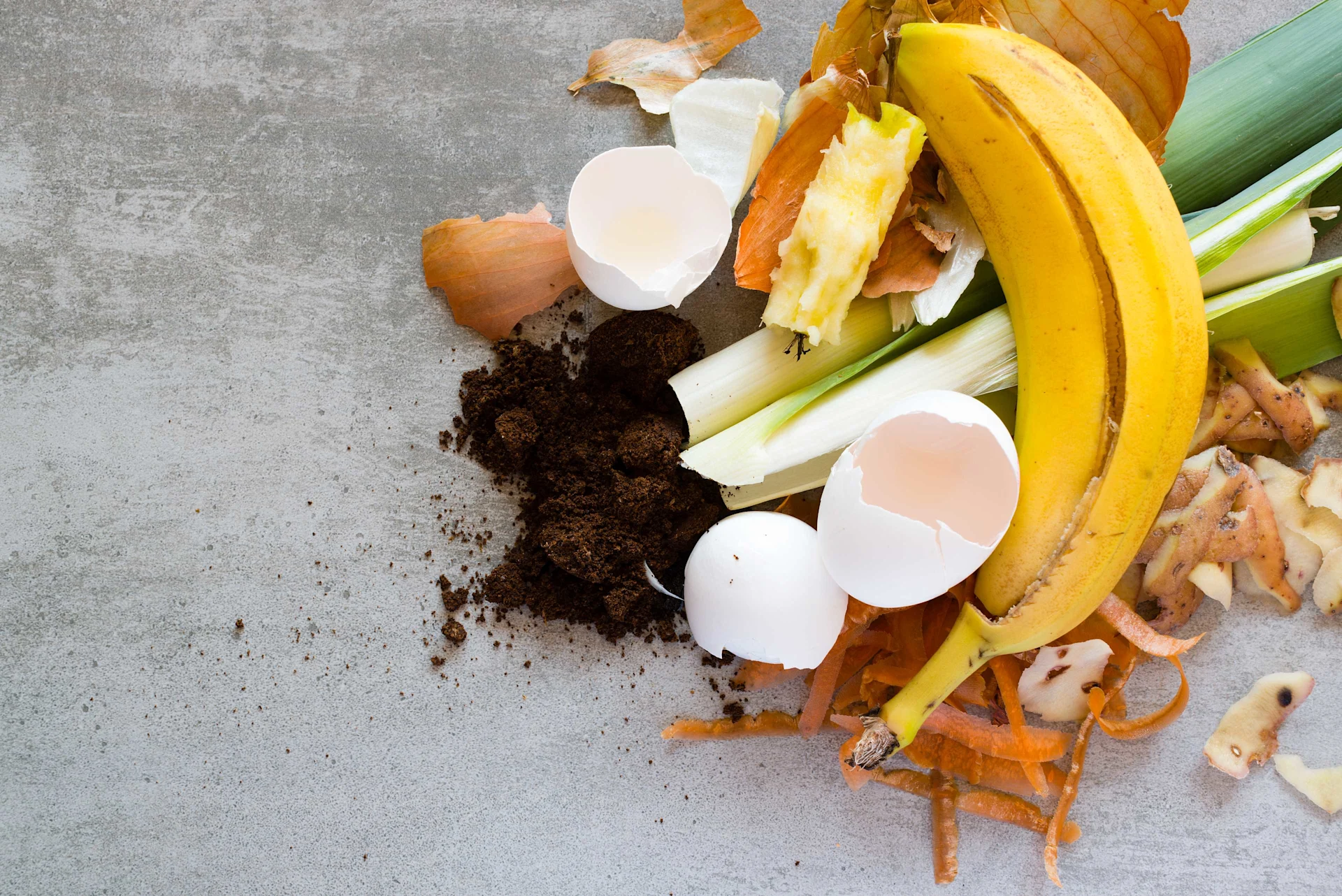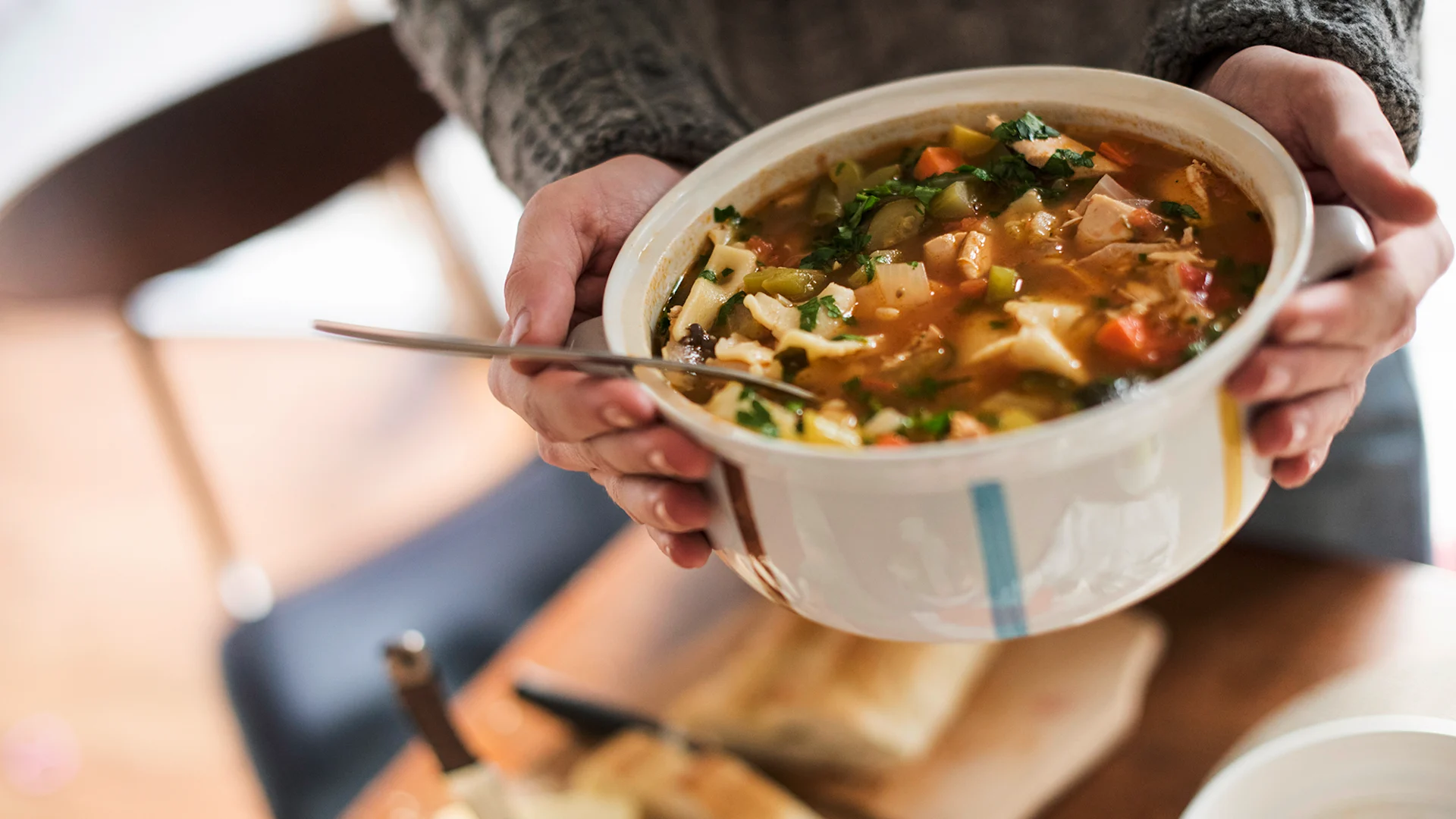
Food waste
What do you know about food waste?
Take part in the food waste quiz and find out how much you already know.
navigation

Food waste
It’s the season for a lavish feast: a festive meal is as much a part of the holidays as a Christmas tree. Here are a few tips and tricks to avoid leaving a pile of wasted leftovers.
You have spent hours preparing the festive feast. You have planned, prepared and cooked the menu. You will end the day with that wonderful feeling you get enjoying it with your family and friends – and also the leftovers. Because let’s be honest, there has to be enough for everyone. This means that leftovers (whether they are cooked or raw) are essentially unavoidable. This is not a problem as long as they do not end up in the bin.
More than a third of Switzerland’s food waste is generated by domestic households: around 90 kilograms of edible foodstuffs, worth around 600 Swiss francs, are thrown away per person in Switzerland every year. For example, this means that one in every three apples bought ends up in the compost heap.
The retail trade uses sophisticated systems to calculate the quantities of fresh produce needed for shops, a planning process that helps it to significantly reduce its food waste. With careful planning, customers can eliminate their food waste too.

The first rule is very simple: make a shopping list. Whether it is a paper list or in one of the many apps available, it helps you remember everything and stops impulse buys. The second tip: never go shopping while hungry. For most people, shopping on an empty stomach results in an (overly) full shopping trolley.
In addition, your handy list means that you work out what you need or want to cook in advance. Precise planning also pays off for lavish festive menus – including in terms of quantities. You should keep this in mind, especially for your festive feast during the holiday season. If you normally ‘only’ cook for yourself, a multi-course meal for multiple guests can quickly result in overbuying. Tips for calculating the right quantities can be found in the text box below.
If you are not sure how many ingredients you need, our shop assistants would be happy to help. These professionals not only know about food, but they are also good at getting the quantities right.
Your senses will not deceive you: if your food smells good, tastes good and looks good, you can enjoy it without worrying. The dates on the packaging also offer useful information. ‘Best before…’ does not mean that the food cannot be eaten after the date shown. However, the ‘use by…’ date on highly perishable goods is mandatory and should be followed.
Storing food properly means that it will keep for longer. Whilst meat and fish do best at the bottom of the fridge, right above the vegetable drawer, other foods like things a little warmer. Cheese and leftover meals can be kept fresh higher up. Dairy products should go in the middle.
Potatoes, tomatoes and fruit, on the other hand, are better off left out of the fridge. Open packets of cold cuts, food tins, or leftover meals should be put in resealable containers. Write on the date if necessary and keep chilled.
As well as proper storage, reusing leftovers is also key. One thing is worth highlighting: celebrate using up leftovers regularly so it becomes routine. You can find lots of recipes to use on Migusto.
Often this is very easy. Leftover vegetables from your festive feast can become a refined soup in the twinkling of an eye. Meat can be sliced and enjoyed cold – or why not make a toasted sandwich? Rice and pasta can also be reheated and enjoyed without issue.
Anything you do not want to keep, your guests might want to take away so that they have something ready to eat the next day.

Of all of the food waste produced in Switzerland, the smallest proportion (10 percent) comes from the retail trade. For example, Migros uses nearly 99 percent of its food as nutrition. Just one percent is recycled as animal feed or burned to make biogas. Surpluses from Migros Industrie are often reused in-house: for example, cheesecake mixtures frequently contain cheese edge off cuts. Migros is seeking to halve its food waste production between 2017 and 2030.
As is the case for private shopping, precise planning is also the key to avoiding food waste for retailers. Migros uses data analysis, empirical values and seasonality to prepare the right quantities. This ranges from production through to product ranges in stores. For example, salad orders take the weather into account. More is needed during the warm summer months than in cold and damp winters.
Perishable products are made available at a reduced price in stores before they expire, or are sold after closing time at around a third of their actual price via the app ‘Too Good to Go’. This enabled Migros to save more than 1.5 million food packages in the period up to March 2023. This represents 3750 tonnes of CO₂ saved.
With simple tips, you too can reduce food waste. Join now and let’s save food together.